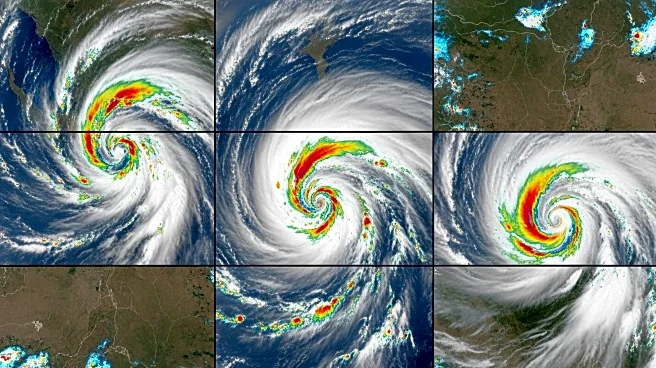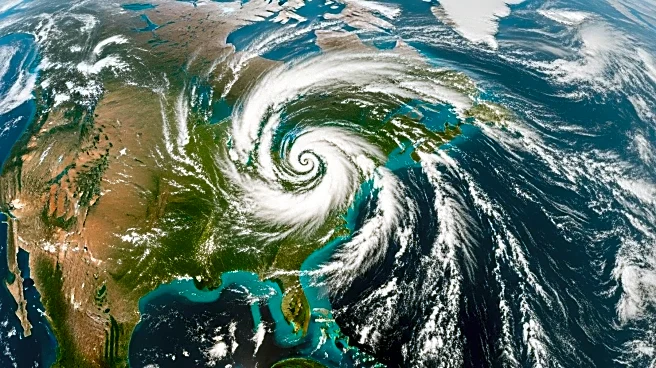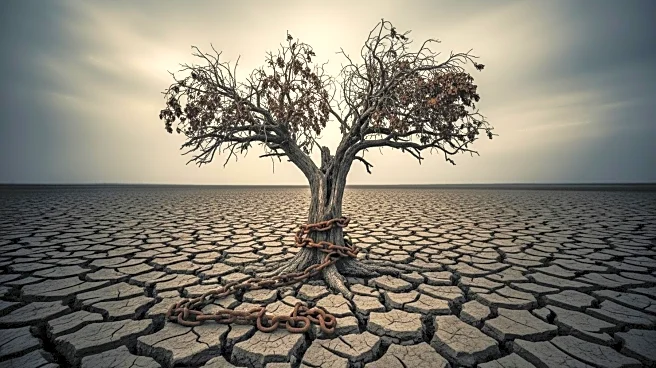What is the story about?
What's Happening?
NASA's Terra and Aqua satellites have captured images of a significant storm scar in Alberta, Canada, following a severe hailstorm on August 20, 2025. The storm, which occurred in Canada's 'hailstorm alley,' left a visible scar approximately 125 miles long. The storm's aftermath was studied by Western University in Ontario as part of its Northern Hail Project, which described the damage as among the worst it had ever seen. The storm caused total crop damage, leveling grain crops and leaving corn as bare stalks. Grasslands were also severely affected, with root systems exposed and shrubs denuded. The storm featured winds gusting up to 93 mph and hail the size of golf balls. Alberta's susceptibility to such storms is attributed to its elevation and proximity to the Rocky Mountains, which create conditions conducive to severe weather.
Why It's Important?
The storm's impact underscores the increasing severity of extreme weather events, which are becoming more frequent due to climate change. The damage to agriculture, including crops like alfalfa, canola, and wheat, poses significant economic challenges for farmers in the region. Livestock issues were also reported, with structural damage to barns and homes. The Insurance Bureau of Canada notes that Alberta's unique geographical features contribute to its vulnerability to hailstorms. The broader implications of such events highlight the urgent need for climate action to mitigate future risks. The financial impact of these storms can be substantial, as evidenced by a previous hailstorm in 2024 that resulted in over $2 billion in insured losses.
What's Next?
The full financial impact of the recent storm is still being assessed, with farmers and insurance companies continuing to evaluate the damage and file claims. The ongoing analysis by institutions like Western University may provide further insights into the storm's effects and inform future preparedness strategies. As climate change continues to influence weather patterns, stakeholders in agriculture and insurance industries may need to adapt their practices to better manage risks associated with severe weather events.
Beyond the Headlines
The storm's aftermath raises questions about the long-term sustainability of agriculture in regions prone to extreme weather. The ethical considerations of climate change mitigation and adaptation strategies are increasingly relevant as communities face the consequences of environmental shifts. The cultural impact on rural communities, who rely heavily on agriculture, is profound, as they navigate the challenges posed by unpredictable weather patterns.
AI Generated Content
Do you find this article useful?

















